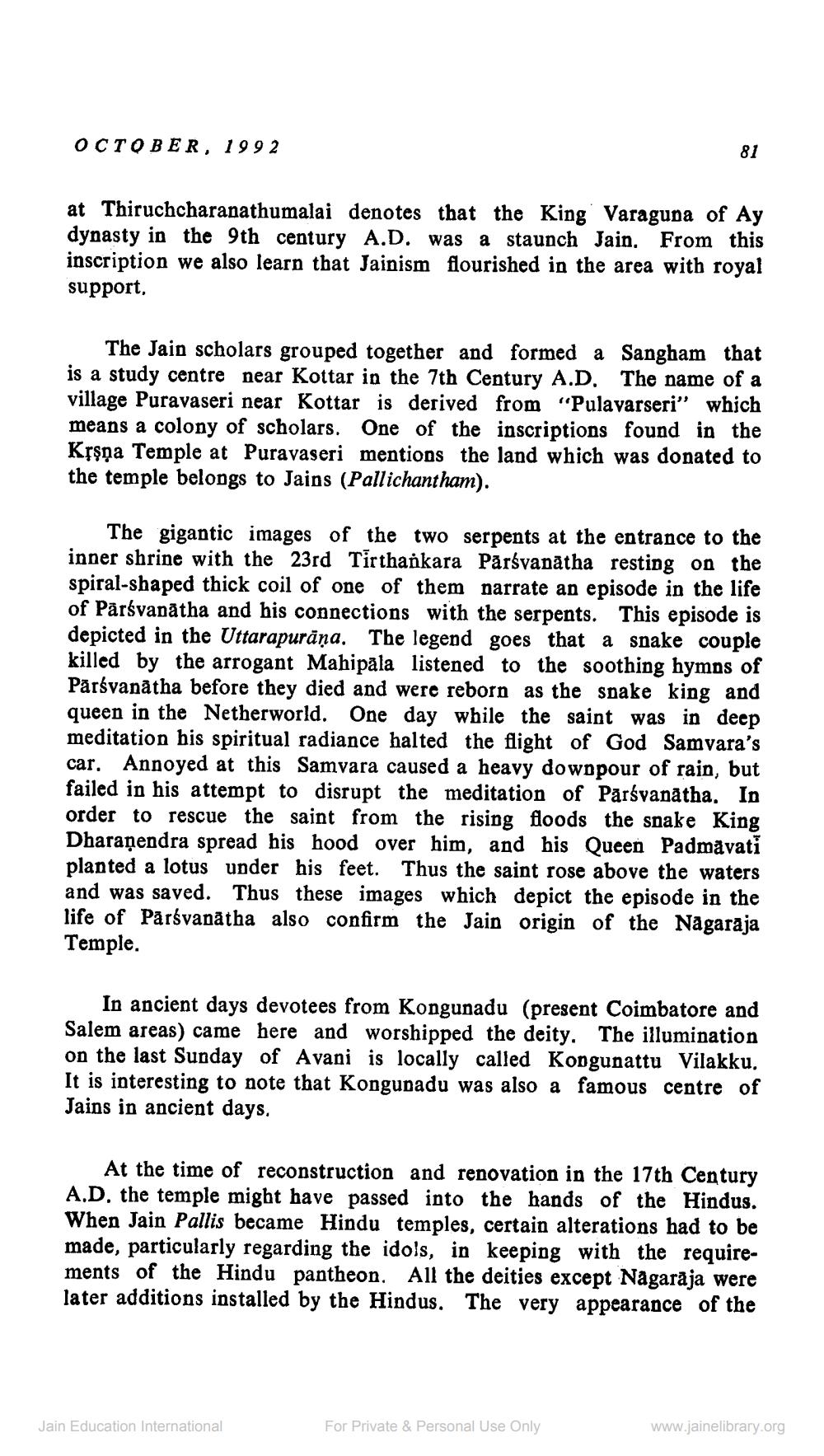________________
OCTOBER, 1992
at Thiruchcharanathumalai denotes that the King Varaguna of Ay dynasty in the 9th century A.D. was a staunch Jain. From this inscription we also learn that Jainism flourished in the area with royal support,
81
The Jain scholars grouped together and formed a Sangham that is a study centre near Kottar in the 7th Century A.D. The name of a village Puravaseri near Kottar is derived from "Pulavarseri" which means a colony of scholars. One of the inscriptions found in the Kṛṣṇa Temple at Puravaseri mentions the land which was donated to the temple belongs to Jains (Pallichantham).
The gigantic images of the two serpents at the entrance to the inner shrine with the 23rd Tirthankara Parsvanatha resting on the spiral-shaped thick coil of one of them narrate an episode in the life of Parsvanatha and his connections with the serpents. This episode is depicted in the Uttarapuraṇa. The legend goes that a snake couple killed by the arrogant Mahipala listened to the soothing hymns of Pārsvanatha before they died and were reborn as the snake king and queen in the Netherworld. One day while the saint was in deep meditation his spiritual radiance halted the flight of God Samvara's car. Annoyed at this Samvara caused a heavy downpour of rain, but failed in his attempt to disrupt the meditation of Parsvanatha. In order to rescue the saint from the rising floods the snake King Dharanendra spread his hood over him, and his Queen Padmavati planted a lotus under his feet. Thus the saint rose above the waters and was saved. Thus these images which depict the episode in the life of Parsvanatha also confirm the Jain origin of the Nagaraja Temple.
In ancient days devotees from Kongunadu (present Coimbatore and Salem areas) came here and worshipped the deity. The illumination on the last Sunday of Avani is locally called Kongunattu Vilakku. It is interesting to note that Kongunadu was also a famous centre of Jains in ancient days.
At the time of reconstruction and renovation in the 17th Century A.D. the temple might have passed into the hands of the Hindus. When Jain Pallis became Hindu temples, certain alterations had to be made, particularly regarding the idols, in keeping with the requirements of the Hindu pantheon. All the deities except Nagaraja were later additions installed by the Hindus. The very appearance of the
Jain Education International
For Private & Personal Use Only
www.jainelibrary.org




